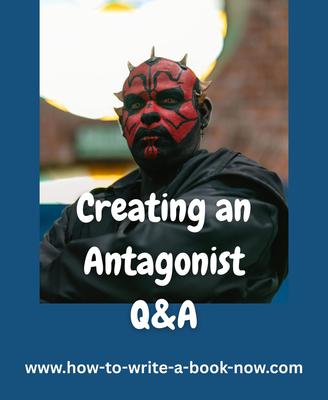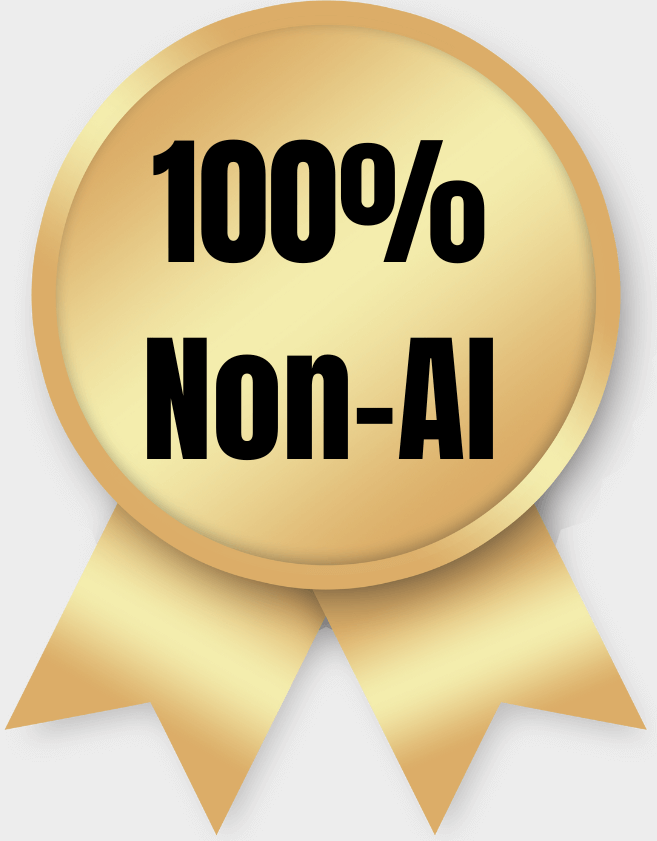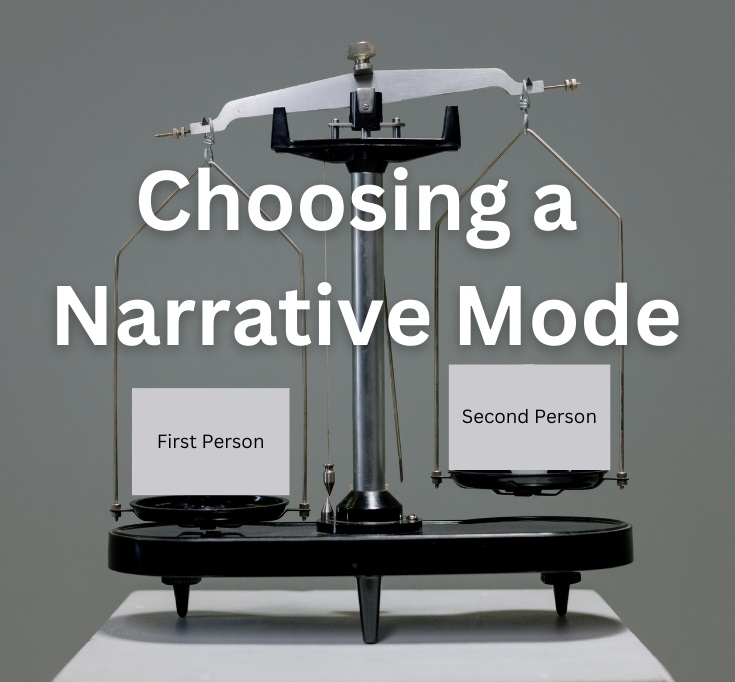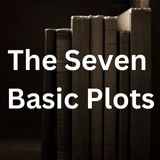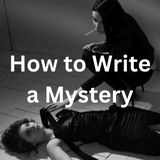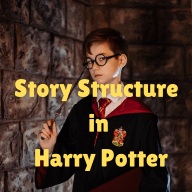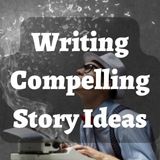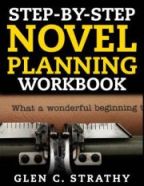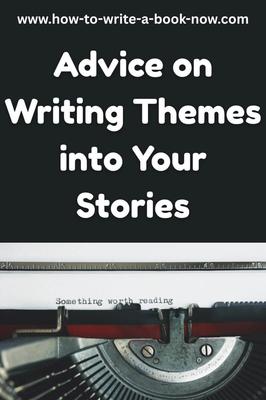Unique Personality For My Antagonist
Question: I can't seem to come up with a unique personality for my antagonist. (I have come up with a motive for why he does what he does.)
Answer: Inventing an antagonist is no different than inventing any other character. There are several levels to explore.
On the internal level, you look at things like...
Purposes: what he wants
Methods: the ways, approaches he takes to get what he wants
Evaluations: how he judges his progress, situations, himself, other people
Dramatic function: which of the unique functions listed in the article on Archetypal Characters (on the Write a Novel page) does this character possess?
On an external level, you look at things like...
Physical traits and appearance, and how they affect his personality. Was he always handsome or ugly, athletic or awkward etc.? When was he born?
Intelligence, talents, limitations, weaknesses.
Interests & hobbies.
Cultural background, education, profession, experiences.
For each of these characteristics, do some brainstorming. Try to come up with a list of possibilities so you can choose what most appeals to you and what makes sense.
Often it helps to find one or two real life people you can imagine fitting the role of your character, and then give your character a combination of their traits.
Keep in mind that anyone can be an antagonist. Anyone can do evil in the right situation or circumstances, including those you might least suspect.
Another approach that can work is to look at the article on Jungian personality archetypes on this site (https://www.how-to-write-a-book-now.com/jungian-character-archetypes.html). Pay attention especially to the dark versions of each of the 12 archetypes. Assigning an archetype to your antagonist can help to define their personality and how they tend to react to situations and people.
If all else fails, let him be a bit of a mystery for a while. You may discover more about the character during the writing process.
Comments for Unique Personality For My Antagonist
|
||
|
||
Is an Antagonist Necessary?
by Zoe
(UK)
Is an antatonist necessary in a story? For example, I'm writing a story about a 21 year old girl, who meets her grandmother on a plane back from Paris and learns about her late mother and more about her adoptive aunt. The grandmother then passes away and the girl (Violet) decides to travel the world as a photographer.
She meets two men in different countries who she befriends, and meets a girl who eventually decides to travel with her. She has a sort of love triangle with these guys, who she can't seem to choose between. Then, she finds her real mother who everyone believed to be dead and blah blah, family reunion, she chooses one of the guys, becomes a professional photographer, etc, etc.
What I can't seem to find out is who the antagonist is, and are these characters really necessary? It's possible the adoptive aunt is the antagonist, as she is overprotective and unstable, but she's not a bad character and is only featured at the beginning and end of the story. Do I need to have a typical antagonist for my story?
Answer: The purpose of an antagonist is to embody the argument against the story goal. So it helps to first know what the story goal is.
For example, might it be for the main character to reconcile with her mother? Or is it for her to discover the truth about her past?
Once you know what the goal is the antagonist will be the person who argues and acts against it. Perhaps the aunt tries to prevent or discourage her from discovering her past or reconciling with her mother. You can give the aunt a reason for her attitude. Alternatively, perhaps the antagonist could be the mother who, for some reason, doesn't want to be found and the aunt is there as a forewarning of the dangers of pursuing the goal.
What this adds to the story is that it gives the protagonist something to push against. Conflict with the antagonist will test her determination and her need to achieve the goal. In turn, that lets the reader know that the goal is important to the protagonist, and that the journey is worthwhile. The protagonist will be forced to grow because of the effort required to pursue the goal. She may have to grow in her resolve, or she may have to change her approach to doing things.
Of course, you are also free to split the functions of the antagonist. For instance, one character may try to get the protagonist to reconsider or give up, while the other actively tries to prevent the goal. (For instance, one of the two men might take on one of these functions.)
There are stories where the opposition to the story goal doesn't come from a human character. Sometimes Nature can be the antagonist (as in a survival story), or an animal. Sometimes the community can be the antagonist. But with no antagonist, no opposition to the story goal, the goal can feel too easy to achieve, which makes the story less meaningful.
Does your antagonist have to know they are the antagonist?
by Lessa
(North Carolina)
Question: I have a question but I'm not sure if it pertains more to character development or plot. My protagonist is a princess who has been raised away from home after an accident left her orphaned. She believes absolutely that her older sister who is now queen is evil through and through. The older sister has no idea up until the climax of the story that this is her younger sister's belief. Is that an acceptable way to have the story come out?
I'm very glad I found this website; it's very informative.
Answer: Absolutely! No antagonist actually sees herself as the antagonist. Everyone is the hero in her own mind. An antagonist in a story is simply someone with a motivation to prevent the story goal from being achieved.
Most villains, believe they are good and that their actions are right, even when they do terrible things that cause much suffering.
Sometimes people justify their actions by valuing something so much -- a vision, an ideal, a goal, a belief -- that it takes precedence over their compassion for others.
Sometimes people let themselves become out of touch with the people who suffer from their actions, so they don't see the harm they cause and don't have a normal empathetic response.
Some villains may suffer from a mental disability such as sociopathy or psychopathy, so they don't feel empathy the way people normally do.
And there are certain quasi-mental disabilities or character flaws such as narcissism or other ego problems that can make people value their own accomplishments ahead of other people's well-being.
Take any leader who did terrible things, they will always tell you that they did the right thing or what had to be done. They will have all kinds of justifications.
That's what makes them dangerous.
Best of luck.
Monster as a "lesser" antagonist.
I am attempting to write a fantasy series, but I wanted to have a main villain like Harry Potter's Voldemort, who doesn't exactly show himself until book four, but is still prominent throughout the series. Now, I wanted to do this by giving the main antagonist spot of the first book to one of his minions, a corrupted ancient beast-dragon that inhabits a frozen land inside of a citadel of ice. For more context, this beast used to be the guardian of the Elixir of Life, which obviously grants immortality or completely heals all deathly illnesses from whomever drinks it. The Elixir, unbeknownst to everything alive, was cursed by a long-dead witch, one of the daughters of the Voldemort-type antagonist, to cause really bad things to happen to the world if used as a price to pay for healing or immortality.
Now, while the Elixir is a legend, this beast's existence becomes more and more probable as the journey of my main character goes on, and it is confirmed that the beast had been using its dark magic to influence corruption and dark thoughts within the kingdoms of the world, launching them into war against each other. The goal of the heroine is to somehow kill the beast so that she can stop all the corruption that is settling in everyone's, including her own, hearts, at the behest of an old mentor of hers. What's actually going on is that the beast has been hard at work trying to weaken the world so that its master, the Demon King (my Voldemort), can conquer all the the land very easily, but now that that goal has been achieved it has been, more recently, trying to lure in brave heroes to make use of the Elixir, whose curse that I mentioned earlier would break the holy barriers that are blocking the Demon King's entrance into the world.
Okay, so here's my problem: while there's a good connection between my lesser antagonist and my main antagonist, and the lesser antagonist has a good presence in my first book, how do I make it so that there's also a prominent connection between the main character and the main antagonist? In many cases I've seen stories where there's an awesome rival to the main character and it's built up and up until it dies to make way for the main antagonist that... NO ONE's ever heard about before, or only heard about him briefly then he kinda disappeared and then showed up 4 books later. On the other hand, sometimes the main antagonist is so prominent throughout the story that when it comes time to reveal himself he doesn't seem that impressive. So to reiterate my question, how do I find a good balance so that my minor antagonist doesn't outstage my main antagonist, but keeps my main antagonist subtle?
Thanks!
Answer: There may not be a perfect solution to your dilemma, but you might consider a gradual revealing of your main antagonist.
To take the popular example of the first Star Wars trilogy, consider how Emperor Palpatine is revealed.
In Episode IV, the Emperor is mentioned as the head of government and boss of Governor Tarkin and Darth Vader. He is clearly having an influence on the story world (dissolving the Senate, for example), but he is not actually seen.
In Episode V, the Emperor is partially revealed. We see a hologram of his hooded and scarred face only. He has a short conversation with Darth Vader (who has stepped into Tarkin's former role of directing the Imperial fleet). However, this small reveal creates more mystery. The Emperor clearly has power. We have hints that he is a Sith Lord, or at least has clairvoyant abilities. We have a difference of opinion between him and Vader regarding Luke. But we learn next to nothing about the mysterious Emperor.
Only in Episode VI do we see the Emperor in the flesh and discover he has powers which are more awesome than Obi wan Kenobi or Yoda have displayed.
The gradual reveal gives the villain an increasing presence in the story (so he's never forgotten) while building the audience's curiosity and anticipation.
Incidentally, JK Rowling does a similar gradual reveal with Voldemort. In the first Harry Potter book, we see Voldemort in a weakened state -- as a disembodied head. But he only appears in one or two scenes.
In the second book, we see Tom Riddle, the ghost of Voldemort's teenage self. At first, all we see of Riddle is a series of "text messages" via his diary. Then he appears briefly towards the end when he starts to become flesh, but fails. In the the third book, all we get is a prophecy about how Peter Pettigrew will help Voldemort return. Only in the fourth book, after so much anticipation, do we finally see Voldemort in the flesh.
Also, just as Tarkin and Vader stand in for the Emperor in Star Wars, Voldemort has a series of lesser villains stand in for him, sometimes under his control and sometimes acting villainously on their own -- Quirrel, Lucius Malfoy, Ginny, and Peter.
Incidentally, regarding the secondary villain, rather than building up this character and then bumping him off, I think it's more common to present him as quite awesome (as in terrifying) in the beginning and then reveal that he is only second fiddle to the real villain. In other words, it's the real villain who you want to build anticipation regarding. Darth, for example is presented as quite villainous and powerful from the start. When we see him later bowing to the Emperor, it makes the Emperor appear even more powerful.
Hope that helps.
Cunning Antagonist
by David
(Virginia)
Question: I've always had difficulty making the villain truly clever, intelligent, and crafty. I know this depends on aspects such as history, mentality, overall personality, but is there a secret to making them seem especially dark and cunning? Not just in their actions, but in the way they speak. That's another problem, I'm not sure how to write villain dialogue and make them sound intimidating.
Answer: One ingredient to villainy which you might consider is the concept of "ulterior motive."
Historically, what makes villains so untrustworthy is that they do not state their real motives up front. They are dishonest or not open about their real plans, such that people cannot trust them. This also makes them outsiders to their community. (This dates back to the times when people knew the members of their community very well and people relied on their friends, family, and neighbours. Trust mattered much more perhaps than it does today.)
Something else about villains is that they pursue their personal ambitions regardless of other people. In this, they resemble sociopaths who lack empathy for others. They try to manipulate situations and people.
One easy way to make a villain villainous is to hide his true motives and intentions. In every scene or conversation, give him a hidden agenda that has to do with gaining some advantage. The main character's challenge is to figure out what the villain's real agenda is.
Only when his/her plans are advanced to the stage where success seems inevitable will the villain feel confident enough to reveal them (which is why villains tend to monologue at the crisis). That's also when they want admiration for what they have achieved to feed their ego.
Alternately, some villains will reveal their plans only after being defeated.
If you're not a manipulative, power-hungry person, it can be challenging to put yourself into the mind of such a character, but with a little imagination you can do it.
Comments for Cunning Antagonist
|
||
|
||
Who is my Antagonist?
by Marija
(Frankfurt, Germany )
Question: I don't know who is my antagonist. Well, so I am writing a novel (Genre: Fantasy/Magic) about an older Brother (Let's call him John) who wants to bring his little brother "back to life" because he fell into an deep sleep and can't wake up.(kinda like in the sleeping beauty)
In order to do that, he needs a human (let's call him Rick) who will function as a vessel for the brothers spirit.
The older Brother, John, is my Protagonist (He's the one who keeps the story going) and Rick, who has to be the vessel, is my main character. (He's the one whom the readers are supposed to relate to). There is just a big problem because, if the younger brother is getting into Rick's body, Rick himself is going to die.
Now I have a problem to choose the "villain" or antagonist of the story.
Because my Protagonist is not evil at all, he just wants to save his family and is ready to do everything to reach his goal, even if that means taking someone's life.
And Rick the main character doesn't want to die so he's not ready to help John. But as the story proceeds they get to know each other and get into an love-hate relationship, so that at the end, John cares about Rick's upcoming death, but getting his brother back is still more important to him.
As you see I really can't say who the villain is. I really tried to use some tips from your awesome site but every time I get some useful information, I also get to the point where I finally have to decide who my antagonist is.
So the Story goal is to save the younger brother. But Rick and some other people are kinda trying to act against that, does that make them the bad guys?
I really hope you can help me with this! And Thank you for everything you were already helping me with my novel a lot!
Answer: I think part of your difficulty here stems from the fact that you have not really thought through the moral issues of the story.
Keep in mind that every "villain" in real life and in stories thinks their actions are right and justified -- or at least finds some way to rationalize them -- even if they are completely immoral.
Can you really say that John "is not evil at all, he just wants to save his family"? Maybe that's how he sees it. But killing someone against their will is an immoral deed, even if it is done to save someone else's life.
If Rick wanted to sacrifice himself to save John's brother, that would be morally commendable, but that's not the case you describe.
The fact that Rick is the main character compounds the problem. If the reader sees the story from Rick's point of view, then John would obviously be a villain for wanting to take Rick's life.
The other thing that I think is giving you difficulty is that John is the protagonist. There are stories in which the villain is the protagonist (the character pursuing the goal) and the hero is the antagonist trying to stop them. Because the story is told from the hero's point of view, this fact is often missed.
For example, in Harry Potter and the Philosopher's Stone, Voldemort is the protagonist pursuing the goal of obtaining the Philosopher's stone. Harry is essentially the antagonist trying to prevent this goal from being achieved. In many James Bond films, the villain (e.g. Blofeld) is the protagonist, pursuing some nefarious goal while Bond is the antagonist trying to stop him.
Generally in these stories, the villain is thwarted, which makes them tragi-comedies. They are "tragic" because the goal is not achieved but "comic" because the main character has a good ending.
On the other hand... it is possible to make John a good guy rather than the villain, if that's what you want to do. Here are the steps I think you might consider taking to achieve this...
1. John must not want to take Rick's life against his will. (Even if he does want this at first, his opinion must change as their friendship forms.) You could even have a moment where Rick volunteers to sacrifice himself, but John finds another option.
2. You might consider creating another villain -- possibly someone who caused the brother to fall into the coma in the first place. This would be the adversary John and Rick must confront at the climax.
3. Even if Rick is host to the brother's consciousness, the heroes must make it their mission to find a way to save both Rick and the brother.
Best of luck.
An Organization that Takes on the Antagonist Role
Question: In the novel I'm writing, there isn't a single main antagonist exactly, but an organization that takes on the antagonist role. The organization is an order of monks/priests who literally worship evil as a principle in and of itself. I cannot stress enough my desire to portray them as more than the cheesy "we follow an evil god" kind of villains. They are actually deeply philosophical, intelligent and piously devout to their spirituality. Importantly, these monks do not practice religious fanaticism or imperialism; they do not attempt to "convert" or "preach to" anyone. They believe that good and evil are an eternal balance upon which the universe rests, and that their purpose in existence is to be wicked. One monk speaks of his faith to a supporter of the hero, "The light attempts to seep into all corners of the world, leaving none in peace till it has covered all. The darkness seeks only to keep its fair share. It rests in its deep places, content and unobtrusive". In response to a tirade by a white-clad woman, another monk (in a black habit) asks, "How would your dress glow without my robes set against it?" I want these to be philosophical villains who make the reader stop and consider what good and evil really are and their roles against and beside each other.
Too cheesy? Can I be clearer? Any suggestions? I would love a pro's advice on this concept! Thank you!
Answer: It is perfectly acceptable to have an organization be the antagonist, especially if it tends to appear as a homogenous group - like the ants in the short story "Leiningen versus the Ants" or the Borg as they first appeared in Star Trek.
Of course, sometimes it becomes necessary to give this group a voice, as in the Borg Queen. But if that spokesperson can just as easily be replaced with another, the principle holds.
The trick with the good/evil theme is that everyone thinks they are on the side of good. Just like certain Wall Street types who will argue that "greed is good," and believe it, even though thousands of years of moral philosophy and experience say otherwise.
Comments for An Organization that Takes on the Antagonist Role
|
||
|
||
|
||
|
||
|
||
Identifying an Antagonist
by Stacy
(Portland, OR)
Question: I've recently come across Dramatica theory and it has helped me a lot. I am writing the first book in a three book series. One issue I'm still having trouble with is identifying my antagonist.
My understanding of the antagonist is someone (or something) that stands in the way of the protagonist reaching their goal, be through physically preventing or urging the protagonist to reconsider their goal.
My protagonist/MC is a woman who is very sick and must find a cure for her sickness. However, in order to find a cure she must confront her own personal demons and learn to confide in people, trust others, and eventually confront her past. She would rather ignore her sickness and claims that it's not as bad as it may seem. The Influence Character is someone who cares deeply for her and urges her to actually do something about it.
The MC and the IC travel together to find a cure, but they keep running into dead-ends on finding a cure that sends them down another path. Each path makes the MC confront more of her past and pushes her more out of her comfort zone.
The MC tries to avoid a cure because she fears confronting her past while the IC convinces her at each step to push past that. When the IC is no longer in the picture, he has had such an impact on her that she can finally trust and confront her past to get the cure.
All this leads me to say that the MC's inner fears and demons are actually the antagonist. Her constantly double guessing herself stands in the way of her achieving her goal. But can the protagonist/MC be the antagonist? Can she actively be seeking her goal for a cure while also avoiding it?
Other than her own fears and confronting her past, the only thing keeping them from solving the goal of a cure is actually finding something that will work. They must travel to do so. No one is actively preventing her from finding a cure.
Please help and thank you in advance!
Answer: It seems to me that the antagonist functions in your story are represented by the "demons" from the MC's past.
Presumably, you will have your MC confront these demons, whether they are in the form of other people, her memories of other people, or aspects of herself.
In some stories, the MC will journey to her past (via dream, hypnosis, or imagination) and interact with the people in her memories who are holding her back. Or you might have her journey to see these people in the present, assuming they are still alive, and as a result of the encounter change her conception of them.
In other stories, the main character may confront aspects of herself in a dream or her imagination. A dark shadow or "voice in her head" can hold her back as effectively as a physical monster. The antagonist may be a personified aspect of her personality.
You could also create a character in the present who is similar to someone in the MC's past and triggers a response in her that is counterproductive. Learning to deal with this person in the present may solve her problem in the past.
In any case, it helps to put a face to the thing that is standing in the MC's way.
I Lost my Antagonist
by Natalie
(New Zealand)
I am yet to get any further than writing the prologue and first chapter in my novel but I have been thinking about the plot and characters. I have two main protagonists, the setting is fantasy, and I lost my antagonist.
I started off with this one... let's just call him 'R' for now. R was a bad-guy. He tried to kill the main characters (C and A)to stop them from taking a treasure that they were competing for. However, as I have gone on with playing with the plot and adding twists, it seems that he is no longer the antagonist of my story.
He appears to be the antagonist at first, but as time goes on it is revealed he was trying to protect the treasure, to stop it from getting in the hands of people who would use it for evil. He tries to stop other people from receiving this treasure from C and A, but they too are not planning to use it for evil - but their use of it will end up being terrible for the entire world.
I plan for this to be the first novel in a three part series.
I know that antagonists can be many things, they don't have to be a person. However, I am still worried that readers may not be able to relate to the story if the antagonist is a complex situation rather than a person. Do you think readers will enjoy something of this nature? And do you have any good references of materials I could read to help me along with having a non-living antagonist or psuedo-antagonist? Thank you!
Answer: An antagonist's job is to represent the drive to oppose or avoid the story goal. An antagonist can certainly be a corporate entity, such as an evil government, corporation, brotherhood, etc. if the entity functions as one whole rather than component individuals with different drives. Often, however, it makes sense to personify the antagonist in the form of the head of such a corporate body.
However, in this case you should consider what your story goal is. If the goal is to obtain the treasure, then the antagonist's function will be to try to avoid/prevent this goal from being achieved. It doesn't matter if the antagonist is doing this for evil/selfish or good/selfless reasons.
Most villains, in fiction or real life, believe they act out of good intentions. Even Hitler thought he was right. Few villains actually believe they are villains or that they are doing evil, even if they are.
So your character who is trying to protect the treasure could still be the antagonist. On the other hand, maybe he is just a contagonist and the real antagonist is one of the evil people he is trying to protect the treasure from.
Just a thought.
Comments for I Lost my Antagonist
|
||
|
||
How to keep my villian's status as the main antagonist clear?
by John
(Utah)
Ok, so, here is the premise for my story... Young man (yes, man, not boy) who is training to become a great warrior, is suddenly orphaned after his family is killed by a dragon. The dragons had gradually been growing in strength and numbers, and now it appears they are strong enough to not only kill his father (a world-renowned dragonslayer), but also destroy the world. So this man must go find a way to kill the dragons, not only for revenge, but to ultimately prevent the rest of the world from suffering the same fate his family did.
But, here is the thing: it seems to me that this main protagonist is going to have to have some opposition on his quest to stop the dragons, so I decided that there is actually a powerful evil being who is calling the shots for the dragons, and HE is actually responsible for the death of the man's family, and soon to be responsible for the destruction of humanity.
So this evil being is going to be working mostly behind the scenes, until the climax, where he fights the protagonist once and for all. So, how do I convey to the audience that this guy is the main villain? Will they already assume that he is the top dog, because he said so? Or should I make this evil guy do more "evil-guy" things, like physically and avidly try to stop the protagonist? Or should he have a "henchman" who does it for him? I really hate the corny-ness of evil henchman, but I feel like if I make the evil-guy be on the foreground of the operation, it will seem like he isn't the MAIN villain, and that the main villain is actually the collective, destructive power of the dragons.
But that brings up the other thing I was wondering. Would it work if the "main antagonist" wasn't a single man, but was the impending doom that is the dragons? And maybe this evil man calling the shots is more of a secondary antagonist, who prepares the way for the dragons: the main antagonist. But the whole reason I included this evil-man as the one in charge of the dragons was to give the protagonist a more human feeling of revenge, because it seems like a man killing his family hold more weight than a powerful animal killing his family.
So, basically, my question is: How do I give my main character a strong antagonist that can provide him with a route to channel his revenge toward, and also someone who can oppose him in his quest?
Thanks, Glen!
Question: Obviously you will need to choose who is really in charge of this evil campaign: the dragons or the human who seems to be working with them.
But here's something to consider...
Dramatica points out that sometimes there is...
1. The symptom: what appears to be the problem.
2. The response: what the hero does to combat the symptom.
3. The problem: the real, underlying problem that's causing the symptom.
4. The solution: what will lay the real problem to rest.
For instance, in your story, the dragon killing the young man's father could be an illustration of the symptom -- that the dragons are becoming emboldened and more threatening. His response is therefore to embark on a quest to stop the dragons.
However, it may be that the real problem is the evil guy who is breeding or empowering or egging on the dragons in order to achieve his own ends (perhaps weaken the human society so they'll make him leader, or so they'll be ripe for takeover, etc.) The real solution, which the hero may only discover at the climax is to defeat the evil guy.
To play fair with the reader, you would need to create some mystery (perhaps hide the villain's actions so we see only the results of what he does, but not that he is the cause). At the same time, you would provide some clues as to what's really going on. For instance, someone could point out that the dragons don't typically behave this way, or that certain people in the past had the ability to control the dragons, etc. The trick is put all the evidence in place, but not draw attention to it, and to put in plenty of red herrings to draw the reader off the scent.
Your henchman could be a red herring. For instance, if some clues point to a human controller the henchman could seem like an obvious suspect. However, he could turn out to be just a Contagonist (someone who delays the hero or tempts him to abandon his quest).
Only at the climax will the hero discover or deduce that the evil guy is actually the one controlling the dragons.
You will have to figure out why the evil guy has a presence in the story all along, while appearing innocent.
Of course, you could also do the reverse: make it look like the evil guy is the real villain and the one who killed the father, but have him actually turn out to be the puppet of an intelligent dragon. In that case, the red herrings will make him look like the villain, while the clues actually add up to the dragon as villain.
Hope that helps.
Comments for How to keep my villian's status as the main antagonist clear?
|
||
|
||
|
||
More Than One Antagonist?
by Alisa
(USA)
Question: My main question - Is it okay to have more than one antagonist. It doesn't seem like a it wouldn't work out, but I wanted to ask just in case.
I'd think there is supposed to be one main antagonist, and I have one, but he isn't known to be it until almost the very end of the novel. There are several people that get in the main female character's way, before she gets in contact with the true antagonist. The Story Goal is that she needs to get home.
Just to give information, I always have a female main character, but she almost always has a male main character by her side that acts as a kind of guardian or friend (sometimes even as just a jerk). Is it okay if the male character, who is not the antagonist, is a natural villain at heart?
He has a slight justification for his job and personality, so that in itself seems fine. It's just that he's on the side of law that another antagonist-type character is on (though they hate each other). He is even one of the people who get in the female character's way of completing her goal. He physically does not allow her to go home, but he also influences her in a way that he creates an inner conflict for her about whether or not she even wants to go home.
I think I asked that in an alright way ^^;
Thank you for listening~!
Answer: It sounds as though the male companion is both the Impact character (creating inner conflict) and somewhat of a Contagonist (whose function is to delay and tempt). Rule of thumb (though not hardfast) is that whenever you have a male/female team where one is the main character, the other is usually the impact character.
As for the antagonist issue... the general principle is that the antagonist's function (to prevent/avoid the story goal) should not be filled by more than one character at the same time. But there are ways to work around this principle.
Sometimes you have a hand-off situation. For instance, if the antagonist dies, his function may be picked up by a new villain. Other times, you may have a group that collectively functions as one antagonist (e.g. the Borg on Star Trek - before the Borg Queen was introduced). There are times when an antagonist is absent but acts through a surrogate. For instance, Darth Maul in Star Wars serves just as an extension of the real villain, Darth Sidious. Some apparent villains are actually contagonists.
And some characters take on the antagonist role in the absence of the real antagonist. For instance, in Harry Potter all the various Defense Against the Dark Arts teachers and Draco seem to end up delaying, attacking, or otherwise working against Harry (even Lupin), but only when the real antagonist, Voldemort, is not around.
Short answer: yes, you can have more than one antagonist, but just not at the same time.
Something you should be aware of: often when there appears to be two antagonists, one is actually a contagonist. Contagonists can appear as secondary villains, but really they are characters with their own agenda -- one that differs fromt he antagonist's. They hinder and tempt other characters away from what they are trying to do. Some contagonists are nice people, while others are nasty. But the important thing is that they have a separate aim.
Comments for More Than One Antagonist?
|
||
|
||
|
||
|
||
|
||
Can the antagonist be a character from a daydream?
by Jenn
(Ontario)
I am just beginning to consider writing a story where the protagonist has a disorder that involves excessive daydreaming. In the story,she spends much of her time hiding from reality, daydreaming of a character who is actually an idealized version of herself, existing in a dream world the she has created and obviously exists only in her head. The basic story idea (at least thus far) is about the protagonist's journey to discover who she really is; to drop all her 'masks' and become more assertive, outgoing, and driven like her daydream character. She must learn to step out of her daydream world, and interact more in the real world, even if this means letting go of her dream world and character, to whom she has become emotionally attached.
My question is, can the antagonist be a character from a daydream? Half of the story will revolve around the dream character's own world, and in the book, if the protagonist succeeds to become more like her daydream character, then she will no longer daydream which will in essence mean the 'death' of the dream character.
I'm thinking that if I make the dream character/world more and more enticing as the book progresses, then the dream character can be the antagonist, trying to stop the protagonist from succeeding. Am I on the right track in thinking this?
Answer: The challenge I see is that the daydream character is, as you say, another version of the main character. In this case, she would be opposing herself--being both protagonist and antagonist at the same time. But if the daydream character is the main character then how can she oppose herself?
It might be more manageable for various characters in the dream world to represent different facets or motivations within the main character's mind. For instance, one character in the dream world might represent her drive to achieve the story goal. This would be the dream world protagonist, the person she longs to become. Another dream character might represent the part of her mind that doesn't want her to quit daydreaming. This would be the antagonist. Ideally, all 8 archetypes or all 16 motivations would be represented by various characters in the dream world.
The dream world could also contain a contagonist/impact character who pressures or entices the main character to stay in the dream world, or perhaps tries to persuade her that the dream world is the real world. (This role could also be assumed by the antagonist. It's your choice how you assign these functions.)
What's also common in a story like this, where the main character lives in two worlds, is that the same motivations are represented by characters in both worlds.
For instance, in the real world, might there be some character who mirrors the antagonist function--someone who acts to suppress the main character's desire to be more assertive?
In other words, the real world may parallel the dream world, or the dream world may consist of symbolic representations that illustrate how the main character feels about her real world life.
Who is the Antagonist?
by Lily
(Amsterdam)
I'm writing a story about a girl who is depressed, going to a psychologist and attempts suicide at some point. She is also involved in a relationship with a non-depressed guy, who urges her to keep going to a psychologist.
Now I'm wondering, as the girl is the protagonist, would her ultimate goal be to attempt suicide or to get better (that's her boyfriend's goal and she does try)?
Without a clear goal in mind, I can't figure out who is the antagonist. Which person/institution tries to keep her from achieving her goal (the villain, so to say)?
If her goal is to kill herself, obviously the antagonist would be her boyfriend who tries to keep her from doing so.
However, if her goal is to get better (which is more likely), her boyfriend is helping her with that and is therefore more her guardian. And if this is the goal, who WOULD be the antagonist? Could it be her boss who thinks she's overreacting and won't let her take time off to get better and frequently visit a psychologist?
Thanks in advance, this site is amazing.
Answer: I suspect there are parts of the story that you haven't included in this brief description. If you haven't explored them yourself yet, it might be worthwhile to do so.
For instance, why does she want to commit suicide? What happened to her that lead to this desire?
Could there be a character who traumatized her or put her into the institution or who has authority over her at the institution who wants to keep her there or stop her from getting better?
Or perhaps the Story Goal might be to recover the memory. If so, suicide would be a way of preventing that goal, so the antagonist would be the part of her subconscious (standing in for her abuser) that wants her to die. Or perhaps the abuser doesn't want her to remember what happened, so is trying to persuade her to kill herself.
Remember that the archetypal characters represent different motivations within the storymind. Usually they are represented by different characters, but, in some stories, these motivations are all within the mind of one character.
If it's not a repressed memory, she could be running away from a conscious memory that is too painful, so the goal might be to change her attitude or her impulsive response - to heal from the event. The anatagonist still could be an abusive person who wouldn't want her to escape from his/her influence.
Or it could be there is a situation in her life that is intolerable (for instance a dysfunctional family) and the goal is to resolve that situation. The antagonist could be a family member with a vested interest in the status quo.
Lots of possibilities you can play with.
How do I avoid a cliché goal for my antagonist?
Question: I love good villains, but I usually don't love them because of what they stand for. I like them because of what they look like, because of how they speak, and because of the presence and weight they can bring to a scene. I especially like the big menacing types like Darth Vader, or the more cunning and intense ones like Darth Sidious and Voldemort.
I feel like I'm liking them for the wrong reasons, however, and now that I've been trying to delve deeper into my villain's head I can't understand why my villain's motivations cannot go beyond the shallowness of "I want more power!" Or "I need to rule the land!" Or "Revenge!"
I looked at my favorite villains for inspiration: Palpatine wanted power while Voldemort wanted to take over the wizarding world. Isn't that a little too shallow? Is this as far as I can go? Does the extent of a villain's intrigue lie in the way they carry themselves rather than on their goals?
My question is, is there any way to make my antagonist's goals not cliché without sacrificing their functionality in my story? I'd like to love him for everything he is, not for only half of what he is, or it will be hard for me to get into him, and therefore write him effectively.
Answer: You have hit upon one of the reasons some people grow to dislike genre fiction in favour of literary fiction.
In some genres, characters can be more archetypal. Villains are more like cardboard cutouts. They look awesome, but there's little depth. That's okay, because truly three-dimensional characters would take away from the adventure, which is the source of much of the reader's enjoyment. It's also true that a big villain makes the hero look more heroic for defeating him, so a little hyperbole helps the story.
Other readers want stories that emphasis depth of character at the expense of plot twists and thrills.
And some readers want the sweet spot -- stories in which the characters have authenticity and originality, and the plot is an emotional roller coaster as well.
The situation is also similar to what actors face when they're handed the role of a very cardboard villain. The great actors find a way to add depth and authenticity to their performance while still delivering the big evil presence.
If the character acts big and does big things, the feelings, drives, thoughts, pain, daring, etc. that underlie the character must be equally big to justify the actions.
For instance, it may take a lot of pain and anger to drive someone to commit murder. It may take huge feelings of inadequacy and ego to give someone the desire to take over the world as compensation.
This is, I suspect, why Rowling went to such lengths to show Voldemort as the product of a traumatized mother who never felt loved, and to show that Voldemort was never loved as a child either. For that matter, Voldemort's grandfather was also a damaged person who took out his frustrations on others. His uncle seems psychopathic. So there were multiple generations of inherited damage.
On the other hand, Palpatine seems more cartoonish because we do not know the source of his thirst for power. His desire for the Sith to avenge themselves against the Jedi might suggest that he had a childhood in which he felt unfairly cheated out of some status, but that's just a guess.
(Psychologists say that psychopaths are born with a lack of empathy, but sociopaths become that way through childhood trauma.)
It can be helpful to keep asking "why" your characters do what they do until you find reasons that make sense, even if those reasons never appear in the story. Making the character more real in your mind makes it easier to write about them.
Comments for How do I avoid a cliché goal for my antagonist?
|
||
|
||
|
||
Find my Antagonist
by Emma
(The Netherlands)
I'm having some trouble finding my Antagonist and I’m hoping you would be so kind to help me :). A brief description of my story:
A young woman struggles with picking up her life after a traumatic accident two years ago and she finds life meaningless. When she had the accident she made a choice to live in a near-death experience but now she feels that she may have made the wrong choice and she would be better off dead. So she is unhappy. Then she is asked to sing a lead role in a music event on the other part of the country by a friend of the family. At first she wants to refuse but her mother tries to persuade her because she thinks it's time for her daughter to leave the past behind and start looking to the future. This marks also my story goal / story problem: how to deal with a traumatic event in your life and to overcome it. All my other characters will have something in their past or present that was/is traumatic for them. So eventually the young woman accepts the role but only under the condition that her past remains a secret. Off course this will create problems. The impact character is her love interest who will also help her to overcome her trauma and to conquer her fears.
I can’t seem to find out who my antagonist is. Is it the driver that causes the accident? Is it her past away best friend that prevents her from being happy because she feels guilty? Or is it the accident itself?
Hopefully you can help me. You would make me very happy if you could answer my question. Thank you in advance for all your efforts and for this brilliant website. It is really a great help!
Emma
Answer: It sounds to me as though the young woman herself, as well as being the main character, is actually the antagonist.
The protagonist could well be the mother who has the goal of helping your main character find purpose in her life.
Consider that functions of the antagonist are to avoid the goal (external) and reconsider (internal). Certainly, the young woman is reconsidering her decision to live, and avoiding the mother's goal.
This configuration is often missed because we are used to thinking of the protagonist and main character as the same, but not all stories work that way. The antagonist can be the main character.
The love interest still works as impact character, possibly someone who can show the main character a different way of assessing or responding to the situation she finds herself in.
Best of luck.
Antagonist... who is not really an antagonist
by .
(Portugal)
Question: Ok, after this rather confusing title, let me explain to you: My main character's objective is to defeat a terrible man, a dictator that rules her country, since all he did was evil and cruel to the people of her country. She is actually his daughter, but she never had a conversation with him except for one in the beginning when he tried to control her mind (yeah, some of my characters have powers). However, since he is her father and she ends up knowing a lot about his past through her uncles, the pictures of him and his old diaries, she kind of knows who he used to be.
He acts like a psychopath, and the characters often hear stories about innocent people who were killed by people under his orders, or even by him. So, the main character and her friends have no doubt he is a terrible man who needs to be stopped.
Now, finally the real question, that is related to the title.
His mind is actually being controlled. He is actually a pawn that, due to his extremely advanced powers, got controlled by an even bigger group of enemies. So I want the first book to end when he dies and the main character actually finds out there is a bigger obstacle, a bigger threat behind the guy she always thought was the enemy, but was actually a good person. But... it sounds just... bad. It sounds sudden, like an idea that fell out of nowhere to make the main character's life terrible. It feels... like there needs to be more to it. Finally, my question: how should I reveal this plot twist in a more normal way? Like, when the reader sees this moment, he/she thinks "aha! It all makes sense now!", instead of thinking "ugh, what a lame plot twist, not gonna read the next book."
Answer: I think the solution is to not make the idea fall out of nowhere, but to foreshadow it. This is tricky to do, but you need to insert tiny clues throughout the story -- clues that do not draw attention to themselves when introduced, but which the reader can look back at the end of the story and see how they all add up to the truth.
Something else to consider is whether the main character's goal is really to depose her father or to understand why he is doing the things he is doing, to resolve the contradictions between his current behaviour and the man he used to be. (In other words, is deposing him simply a way to get to the truth?) But that might be too obvious.
You may need to surround the main character with others who have different opinions regarding her father, so that it becomes a dilemma of whose opinion to trust. Someone who looks like they don't know what they're talking about could turn out to be partially correct.
Another approach is to ask yourself what the real antagonist is doing at each point in the story. You create mystery when characters react to things, but the reader doesn't get to see what they're reacting to. In other words, you hide the villain's activities, but not their effects. The reader will expect/hope to have everything explained in the end. Then, when you present your solution that explains everything, it doesn't seem like it comes out of nowhere but has been there all along, just behind the curtain.
Best of luck.
Comments for Antagonist... who is not really an antagonist
|
||
|
||
|
||
|
||
|
||
|
||
|
||
Antagonist with no Connection to the Main Plot
by Keegan
(USA)
Question: In the story I am writing I have a minor antagonist with no connection to the main plot, who is there to spark emotional conflict with the two main characters. The problem is they are a preacher, someone who is generally considered a good person, and I am having trouble finding the right balance of good and bad to make them a interesting and sincere character. Advice?
Answer: Bear in mind that an antagonist is not necessarily an evil or an unlikable person. An antagonist is someone who is opposed to the story goal. Other characters can be evil or unlikable without being the antagonist.
Also, a character can be moral, well-intentioned, and likeable but still advocate the wrong approach for the current problem. They may be misguided, have a false objective, or have a false grasp of the problem. People can also overvalue ideals or ideology and undervalue the facts of a situation and the real-life impacts of their choices. A person's emotional investment in a belief system can make them fail to recognize that following their beliefs will lead to results that are the opposite of their intentions.
In some cases, people will embrace a belief system that justifies the immoral actions they want to do. The belief system lets them convince themselves and others that they are really good people. An obvious example is Hitler, who on some level believed he was doing the morally right thing with his eugenics program, regardless of the horrific suffering and injustice it caused. If you look around, you can find many other issues today where ideology is used to justify suffering, greed, and injustice.
Getting back to your story, your preacher might be...
* An impact character: someone who forces the main character to re-examine or doubt his/her approach to handling problems by arguing for or providing an example of a different approach. The main character's personal crisis would be the moment when he/she decides whether to stay with his current approach or switch to the impact character's approach. It could, for example, turn out that the preacher, while appearing to be a nasty person, actually has a moral purpose behind his behaviour.
* A contagonist: someone who tempts the main character to take the easy way out or seek immediate rewards rather than pursue the long-term, big picture rewards. A contagonist can also delay characters by throwing obstacles in their path. Causing an argument between friends might be one way of doing this. Talking them into the wrong course of action would be another.
From the Antagonist's viewpoint
by Adam
(St. John's, Newfoundland, Canada)
Question: In my story the Protagonist becomes the leader of one group while the Antagonist becomes the leader of an opposing group. With this in mind, when telling the story from the Antagonist's viewpoint, wouldn't the Antagonist have a variety of support characters within their organization just as the Protagonist does?
Few villains see THEMSELVES as the bad guy. In fact, in my story the Antagonist believes they will save the world if they defeat the Protagonist and the Story Goal. Doesn't it stand to reason the Antagonist will also have a Guardian, Contagonist, Sidekick, Skeptic and so on? Even if their "on screen" presence is greatly diminished in comparison to the Protagonist's support characters, shouldn't they still exist and have their affect upon the Antagonist?
Answer: You're absolutely correct that a Sidekick, Guardian, etc. can be allied with the Antagonist. The definitions of these archetypes says nothing about whose side they are on. A Sidekick can support any character. A Guardian can help anyone. All that matters (in terms of creating balance) is that all the motivations are represented in the cast.
However, it is not necessary for both the Protagonist and the Antagonist to be surrounded by a complete set of the other character archetypes. In fact, it may be redundant for there to be more than one of each archetype in the entire cast--just as it would be unnecessary for there to be two Protagonists.
It is also true that a villain does not see himself as the villain. However, you raise a key point here.
If you are telling the story from two points of view, sometimes the Protagonist's and sometimes the Antagonist's, then each of these characters will be the main character of his own story. Whenever you are writing from one character's point of view, you are putting them into the role of the main character and creating a separate story for that character.
You may not develop each story fully. For instance, while the hero's story may have all four throughlines fleshed out, the villain's may only have one or two. In some stories, we only get partial throughlines for the secondary POV characters--maybe just a scene or two from his point of view. Very often, they share an overall throughline.
However, within his own story, the villain could certainly be the protagonist. His story could have its own story goal, and different characters may take on the archetypal functions.
It's rather like how in Star Wars, when R2D2 and C3P0 are alone, R2 becomes the main character and takes on the Protagonist role. C3P0 then becomes the Skeptic. But when the story switches to Luke's point of view, the droids become co-Sidekicks.
It's entirely up to you how much you want to develop a secondary story, and you are also at liberty to stay with your hero's point of view, just have one main character and one developed story. Really, it depends how much you want your reader to empathize with the villain.
- Home
- Character Questions
- From the Antagonist's viewpoint
